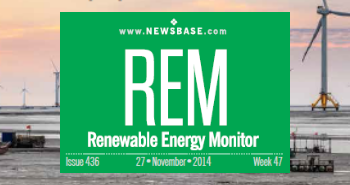COP28: UAE’s renewables champion Masdar is more bark than bite

As world leaders gather in the the United Arab Emirates (UAE) capital of Dubai for the COP28 energy summit, its national renewables champion Masdar is showcasing its achievements. The only trouble is that the company is not as big as it claims to be, reports Bloomberg.
The UAE is advocating a tripling in the global commitment to renewable energy deployment by the end of the decade, as the climate crisis starts to run out of control and the Paris Accord target of 1.5C or less is clearly going to be missed. This summer has already seen global temperatures top 2C above the industrial revolution long-term average and the world is on course to see 3C above the average by 2050 unless a huge effort is made now.
The UAE aims to showcase Masdar as a leading contributor to this effort but scrutiny of its own homegrown renewables leader, Masdar, reveals a discrepancy in its claimed capacity, says Bloomberg.
Founded in 2006, Masdar, under the stewardship of Sultan Al Jaber, who now serves as the President of COP28, emerged as a key player in the transition away from fossil fuels.
The company, which operates renewable projects in the US, UK, Uzbekistan and the UAE, boasts of having "more than 20 GW of total clean energy production capacity" and presents itself as "one of the world's largest renewable energy companies."
However, a closer examination reveals that Masdar's actual portfolio comprises just over 3.8 GW, according to data from BloombergNEF (BNEF). This places Masdar at 62nd globally among renewable energy companies, just behind India's NTPC Ltd.
BNEF's ranking system focuses on equity portions in projects, tracking renewable assets and finance worldwide. While many renewable energy projects have multiple owners, BNEF calculates rankings based on equity stakes to gauge the largest portfolio holders.
For instance, the Al Dhafra solar farm in the UAE has a stated capacity of 2,101 MW, with Masdar holding a 20% stake. In BNEF's assessment, Masdar's portfolio is attributed with a net capacity of 420.2 MW for this project. BNEF identifies 46 projects across 14 countries with Masdar's equity stakes, totalling 3,824 MW.
In contrast, Masdar calculates its portfolio using gross capacity, counting the entire capacity of projects, regardless of its ownership stake. This approach results in Masdar claiming 10 GW of capacity on its website, which is approximately half of its stated capacity of 20 GW.
The discrepancy between Masdar's claims and BNEF's ranking methodology stems from differing criteria for counting projects. Masdar includes projects that are "operational, under construction or secured" in its portfolio. In contrast, BNEF only considers operational capacity for ranking developers.
While Masdar asserts its leadership in geographical and technological diversification, it has not disclosed specific details about the projects that account for the gap between its claimed 10 GW and 20 GW in its full portfolio.
Uzbek successes
That is not to say the company has not made significant contributions. Masdar is a leading player in building renewable projects in Uzbekistan. Heavy investment into a few mega projects means that power-hungry Uzbekistan now has about 2.6 GW of green energy capacity, ahead of Kazakhstan – the first country in Central Asia to invest into renewable power.
With the basics in place, the government is increasingly turning its attention to investing into green power. The initial target was to include 25% of renewable sources in the energy mix – a typical goal for many countries – but since then the government has become far more ambitious: the plan now is to add almost 2 GW of green power every year to reach 12 GW of green generating capacity by 2030, so green power will make up some 40% of the energy mix. The EBRD funded the construction of 1.5 GW of wind projects in 2022 alone, and there is at least that much again in the pipeline for 2023.
One of the first solar plants was Masdar’s 100-MW facility built in the city of Nukus in the Qizilqum (aka Kzyl-Kum) desert that is home to a small population as well as a famous art museum, known as the Louvre of the Steppe.
“Now we are building a 1.4-GW generating capacity wind farm,” Mohamed Jameel Al Ramahi, the CEO of the Middle Eastern power giant Masdar, told a conference in Tashkent earlier this year, a ten-fold expansion in the capacity of Masdar’s previous plant.
“The conditions in the desert are ideal for renewables. The sun is hot. The desert is windy. There is plenty of land. And you have export markets to other Central Asian states and northern China not very far away,” Nandita Parshad, the EBRD’s managing director for the sustainable infrastructure group, told bne IntelliNews in an interview.


Follow us online